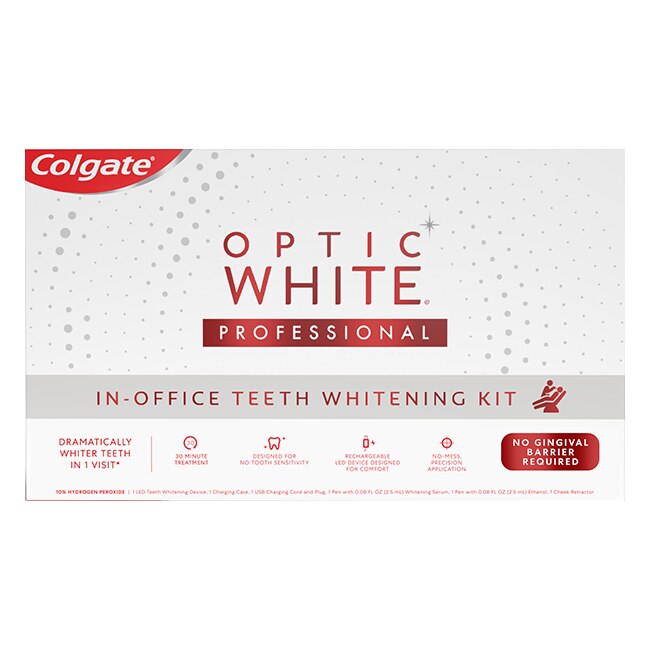Whitening Toothpaste Results: Peroxide Benefits
The pursuit of a brighter, more radiant smile has led many to explore the benefits of whitening toothpaste. Among the various ingredients used in these products, peroxide stands out as a key player in achieving noticeable results. But what exactly are the peroxide benefits in whitening toothpaste, and how does it contribute to a whiter, healthier-looking smile?
At the heart of whitening toothpaste’s effectiveness is the ability of peroxide to break down and dissolve tough stains on the tooth surface. This process, known as oxidation, occurs when the peroxide comes into contact with the stains, effectively lifting them away from the tooth enamel. The result is a surface that appears smoother, cleaner, and significantly whiter.
One of the primary advantages of peroxide in whitening toothpaste is its ability to penetrate deep into the tooth structure. This is particularly beneficial for tackling intrinsic stains, which are those that occur from within the tooth itself, often as a result of fluoride exposure, certain medications, or trauma. By reaching these deep-seated stains, peroxide can help restore the tooth’s natural color, leading to a more uniform and brighter smile.
The concentration of peroxide in whitening toothpastes can vary, with some products containing as little as 1% and others as high as 10% or more. Higher concentrations typically yield faster and more dramatic results but may also increase the risk of tooth sensitivity. It’s essential for users to follow the recommended usage guidelines and, if necessary, start with lower concentrations to gauge their teeth’s sensitivity.
Peroxide’s benefits extend beyond its stain-fighting capabilities. It also possesses antibacterial properties, which can help reduce plaque and prevent the buildup of tartar. This not only supports a whiter smile but also contributes to overall oral health by reducing the risk of cavities and gum disease.
To maximize the effectiveness of peroxide in whitening toothpaste, it’s crucial to maintain good oral hygiene practices. This includes brushing teeth at least twice a day, preferably with a soft-bristled toothbrush and a fluoride toothpaste when not using whitening toothpaste, and flossing once daily to remove plaque and food particles from between the teeth. Regular dental check-ups are also vital for monitoring progress and addressing any issues that may arise during the whitening process.
Interestingly, the effectiveness of peroxide can be enhanced when combined with other ingredients such as baking soda. Baking soda acts as a mild abrasive, helping to remove surface stains and facilitating the penetration of peroxide into the tooth structure. This synergy can lead to more pronounced whitening effects without significantly increasing the risk of sensitivity or other side effects.
In evaluating the results of whitening toothpaste containing peroxide, users should have realistic expectations. Significant improvements can often be seen within a few weeks of consistent use, with the most noticeable changes typically occurring after about a month. However, individual results can vary widely depending on the initial state of the teeth, the concentration of peroxide, and adherence to the recommended usage.
For those considering the use of whitening toothpaste with peroxide, it’s essential to weigh the potential benefits against the possible risks. While generally considered safe, peroxide can cause tooth sensitivity, especially if used in high concentrations or for extended periods. Additionally, overuse or misuse of whitening products can lead to enamel erosion or other dental issues.
In conclusion, peroxide plays a pivotal role in the effectiveness of whitening toothpaste, offering a potent solution for removing stains and whitening teeth. By understanding its benefits, potential risks, and how to use it responsibly, individuals can make informed decisions about incorporating peroxide-based whitening toothpastes into their oral care routine, ultimately working towards achieving the brighter, healthier smile they desire.
How long does it take to see results from using whitening toothpaste with peroxide?
+Noticeable improvements can often be seen within a few weeks of consistent use, with the most significant changes typically occurring after about a month.
Is peroxide in whitening toothpaste safe for daily use?
+Peroxide is generally considered safe for daily use in the concentrations found in most whitening toothpastes. However, it's crucial to follow the manufacturer's instructions and be aware of potential side effects such as tooth sensitivity.
Can I use whitening toothpaste with peroxide if I have sensitive teeth?
+If you have sensitive teeth, it's recommended to start with a lower concentration of peroxide and gradually increase as needed and tolerated. It's also advisable to consult with a dental professional for personalized advice.
The integration of peroxide into whitening toothpaste represents a significant advancement in the quest for a simpler, more effective method of achieving a whiter smile. As with any oral care product, understanding its components, benefits, and potential drawbacks is key to making the most of its advantages while minimizing risks. By embracing the power of peroxide and maintaining diligent oral hygiene practices, individuals can enjoy a brighter, healthier smile that enhances their overall quality of life.
